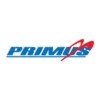Filter interviews by
Bindal Silk Mills Safety Officer Interview Questions and Answers
7 Interview questions
Risk assessment is the process of identifying, analyzing, and evaluating potential risks to determine the likelihood and impact of harm.
Identify potential hazards
Assess the likelihood and severity of harm
Evaluate the risk and determine appropriate control measures
Review and update the assessment regularly
Examples: workplace safety, environmental risks, financial risks
There are 5 types of fire extinguishers: water, foam, powder, CO2, and wet chemical.
Water extinguishers are used for Class A fires involving paper, wood, and textiles.
Foam extinguishers are used for Class A and B fires involving flammable liquids.
Powder extinguishers are used for Class A, B, and C fires involving flammable gases.
CO2 extinguishers are used for Class B and electrical fires.
Wet chemical extinguishers...
OHS policy falls under Section 41-F of the Factories Act.
OHS policy is covered under the Factories Act, which is a comprehensive legislation governing the safety, health, and welfare of workers in factories.
Section 41-F of the Factories Act deals with the provisions related to the health and safety policy of the factory.
The OHS policy should be in writing and should be communicated to all workers in the factory.
Th...
Accident investigation involves gathering information, analyzing evidence, and identifying root causes.
Interview witnesses and gather statements
Examine the accident scene and collect physical evidence
Review safety procedures and training records
Identify contributing factors and root causes
Develop recommendations to prevent future accidents
IS codes for fire extinguishers are standards set by the Bureau of Indian Standards (BIS) for ensuring quality and safety.
IS 15683:2006 - Specification for ABC powder type fire extinguishers
IS 13849:1993 - Specification for water type fire extinguishers
IS 940:2002 - Specification for carbon dioxide type fire extinguishers
IS 10204:1983 - Specification for foam type fire extinguishers
IS 13385:1992 - Specification fo...
Legal compliance of safety refers to the laws and regulations that organizations must follow to ensure workplace safety.
Organizations must comply with federal, state, and local safety regulations
Safety standards must be established and communicated to employees
Regular safety inspections and audits must be conducted
Accidents and incidents must be reported and investigated
Training and education programs must be prov...
Job safety analysis is a process of identifying potential hazards and risks associated with a job or task.
It involves breaking down a job into individual steps
Identifying potential hazards and risks associated with each step
Developing controls and procedures to eliminate or reduce the risks
Ensuring that the controls and procedures are communicated to all workers involved in the job
Regularly reviewing and updating ...
Bindal Silk Mills Safety Officer Interview Experiences
1 interview found
I applied via Recruitment Consulltant and was interviewed in Aug 2022. There were 3 interview rounds.

(3 Questions)
- Q1. Give your self introduction
- Q2. What is your current salary
- Q3. Why do you want to change
(7 Questions)
- Q1. What is risk assesment
- Ans.
Risk assessment is the process of identifying, analyzing, and evaluating potential risks to determine the likelihood and impact of harm.
Identify potential hazards
Assess the likelihood and severity of harm
Evaluate the risk and determine appropriate control measures
Review and update the assessment regularly
Examples: workplace safety, environmental risks, financial risks
- Q2. What is Job safety analysis
- Ans.
Job safety analysis is a process of identifying potential hazards and risks associated with a job or task.
It involves breaking down a job into individual steps
Identifying potential hazards and risks associated with each step
Developing controls and procedures to eliminate or reduce the risks
Ensuring that the controls and procedures are communicated to all workers involved in the job
Regularly reviewing and updating the j...
- Q3. How you can investigate accident
- Ans.
Accident investigation involves gathering information, analyzing evidence, and identifying root causes.
Interview witnesses and gather statements
Examine the accident scene and collect physical evidence
Review safety procedures and training records
Identify contributing factors and root causes
Develop recommendations to prevent future accidents
- Q4. What are the legal compliance of safety
- Ans.
Legal compliance of safety refers to the laws and regulations that organizations must follow to ensure workplace safety.
Organizations must comply with federal, state, and local safety regulations
Safety standards must be established and communicated to employees
Regular safety inspections and audits must be conducted
Accidents and incidents must be reported and investigated
Training and education programs must be provided ...
- Q5. What are the is code of fire extinguisher
- Ans.
IS codes for fire extinguishers are standards set by the Bureau of Indian Standards (BIS) for ensuring quality and safety.
IS 15683:2006 - Specification for ABC powder type fire extinguishers
IS 13849:1993 - Specification for water type fire extinguishers
IS 940:2002 - Specification for carbon dioxide type fire extinguishers
IS 10204:1983 - Specification for foam type fire extinguishers
IS 13385:1992 - Specification for dry...
- Q6. In which clause of factory act OHS policy falls
- Ans.
OHS policy falls under Section 41-F of the Factories Act.
OHS policy is covered under the Factories Act, which is a comprehensive legislation governing the safety, health, and welfare of workers in factories.
Section 41-F of the Factories Act deals with the provisions related to the health and safety policy of the factory.
The OHS policy should be in writing and should be communicated to all workers in the factory.
The pol...
- Q7. How many types of fire extinguisher
- Ans.
There are 5 types of fire extinguishers: water, foam, powder, CO2, and wet chemical.
Water extinguishers are used for Class A fires involving paper, wood, and textiles.
Foam extinguishers are used for Class A and B fires involving flammable liquids.
Powder extinguishers are used for Class A, B, and C fires involving flammable gases.
CO2 extinguishers are used for Class B and electrical fires.
Wet chemical extinguishers are ...
Interview Preparation Tips
- Risk Assessment
- Legal Compliance
Top trending discussions






Interview questions from similar companies

I applied via Referral and was interviewed in Nov 2020. There were 3 interview rounds.
Interview Questionnaire
1 Question
- Q1. Fire, Risk assessment, Hazard identification, fire hydrant system, safety trainings.
Interview Preparation Tips

I applied via Referral and was interviewed before Nov 2018. There were 2 interview rounds.
Interview Questionnaire
2 Questions
- Q1. What is your present salary
- Q2. What is your expected salary
Interview Preparation Tips
- Leadership
- Safety Officer Activities
- Safety
- HAZOP

I applied via Company Website and was interviewed in Apr 2021. There was 1 interview round.
Interview Questionnaire
4 Questions
- Q1. What is hazard in tunnels
- Ans.
Hazards in tunnels include poor air quality, fire, flooding, collapse, and electrical hazards.
Poor air quality due to exhaust fumes, dust, and other pollutants
Fire hazards due to flammable materials and lack of ventilation
Flooding due to water leaks or natural disasters
Collapse of the tunnel structure due to poor maintenance or geological factors
Electrical hazards due to exposed wires and equipment
Examples include the ...
- Q2. Hazard in hot work
- Ans.
Hot work poses a hazard due to the potential for fire and burns.
Hot work should only be performed in designated areas
A fire watch should be established during and after hot work
Proper personal protective equipment should be worn
All flammable materials should be removed or properly protected
Examples of hot work include welding, cutting, and brazing
- Q3. Ohs reports
- Q4. Current ctc
- Ans.
My current CTC is confidential information.
I prefer not to disclose my current salary as it is confidential.
I am open to discussing my salary expectations for this role.
My focus is on finding the right opportunity and not just a higher salary.
I am confident that my skills and experience make me a strong candidate for this position.
Interview Preparation Tips

I appeared for an interview before Dec 2020.
Interview Questionnaire
1 Question
- Q1. Risk Assessment
Interview Preparation Tips
Interview Preparation Tips

Safety Officer Interview Questions & Answers
Arvind Goodhill Suit Manufacturingposted on 27 May 2022
I applied via Approached by Company and was interviewed before May 2021. There were 2 interview rounds.

(1 Question)
- Q1. Ask about the experience and the personal details
Interview Preparation Tips
I appeared for an interview in Aug 2021.

Discuss
Interview Preparation Tips
Safety Officer Interview Questions & Answers
Adpro Engineering & Powerposted on 1 Apr 2021
Interview Questionnaire
1 Question
- Q1. About confined space and its hazard and also the msds about chemicals and many more about unsafe act and unsafe condition.
Safety Officer Interview Questions & Answers
Sandhya Organic Chemicalposted on 21 Apr 2022
I applied via Referral and was interviewed before Apr 2021. There were 2 interview rounds.

(1 Question)
- Q1. General safety.. ISO .... PTW system ... Safety Officer activities ...
Interview Preparation Tips
Bindal Silk Mills Interview FAQs
Tell us how to improve this page.
Interview Questions for Popular Designations
Interview Questions from Similar Companies
|
Accounts Manager
4
salaries
| ₹6.2 L/yr - ₹7.5 L/yr |
|
Instrument Engineer
4
salaries
| ₹3 L/yr - ₹6 L/yr |
|
Electrical Engineer
3
salaries
| ₹3 L/yr - ₹3 L/yr |
|
Legal Manager
3
salaries
| ₹5 L/yr - ₹6 L/yr |

Primus Global Technologies

Magneti Marelli Motherson Auto System

TriGeo Technologies

Tradeshala
- Home >
- Interviews >
- Bindal Silk Mills Interview Questions













